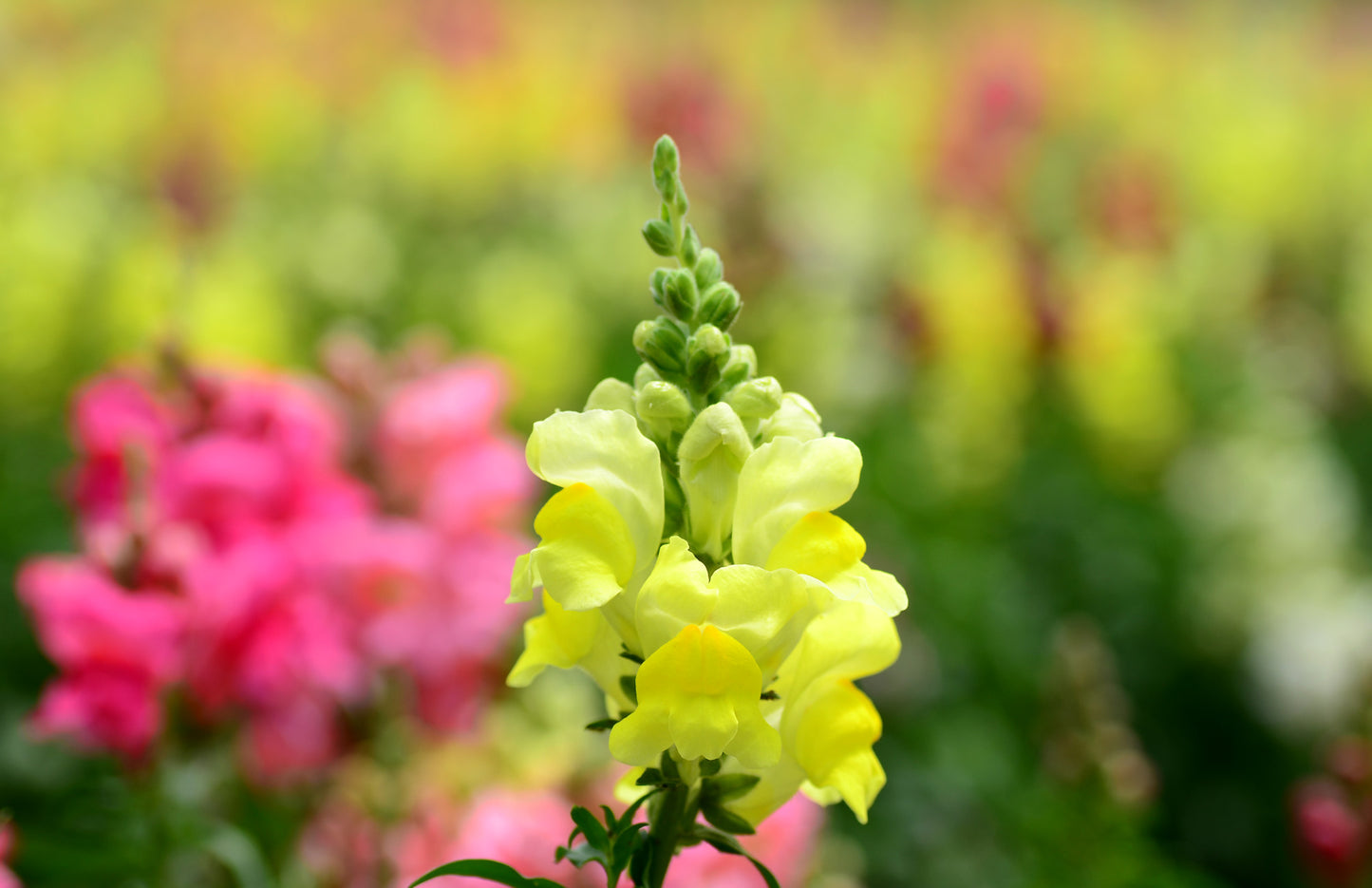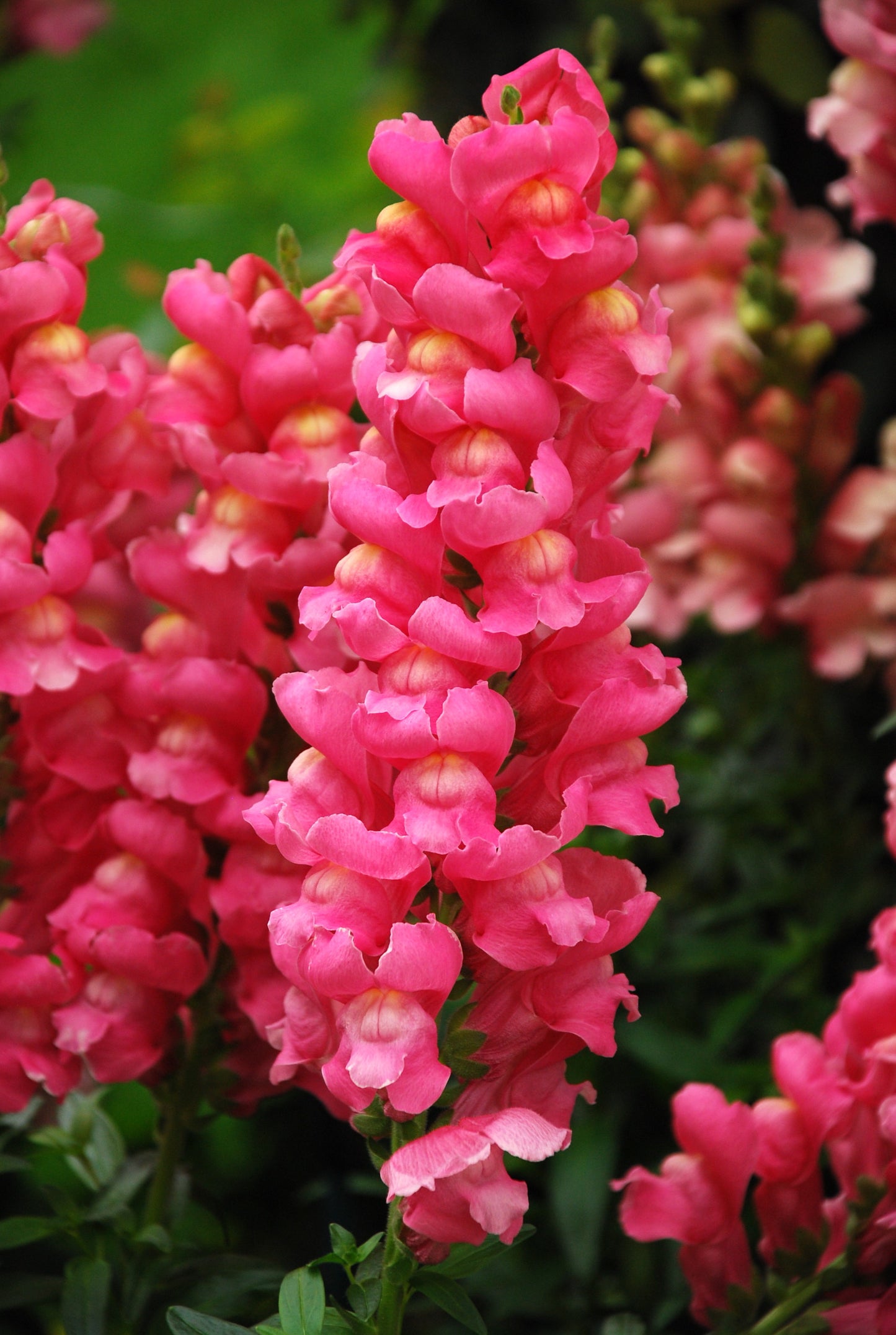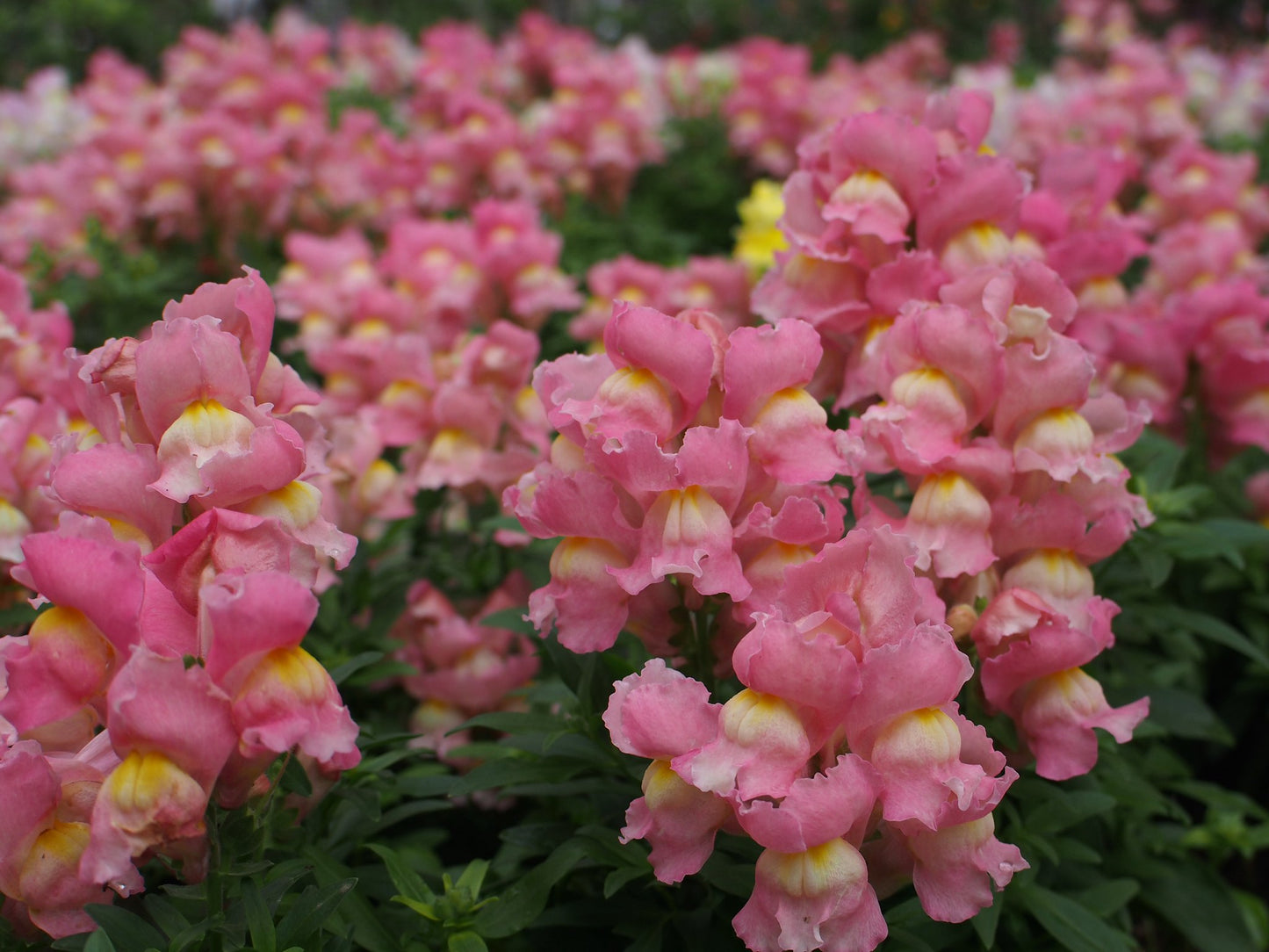Floridaseeds
Snapdragon 2000 Seeds Antirrhinum majus USA Company
Snapdragon 2000 Seeds Antirrhinum majus USA Company
Couldn't load pickup availability
Antirrhinum majus, commonly known as the snapdragon, is a popular and widely cultivated flowering plant known for its colorful, tubular-shaped flowers. Snapdragons are part of the Scrophulariaceae family and are native to the Mediterranean region, but they are commonly grown as ornamental plants in gardens around the world. Here are some key features and information about Antirrhinum majus:
Key Characteristics of Antirrhinum majus:
Flowers: The most distinctive feature of snapdragons is their unique flower shape. The flowers are tubular with a wide, open "mouth" and a closed, conical "snap." When the sides of the flower are gently squeezed, it opens and closes like a dragon's mouth, giving the plant its common name. Snapdragons come in a wide range of colors, including white, yellow, orange, pink, red, and purple, and they may be single-colored or have bi-colored patterns.
Growth Habit: Snapdragons are typically compact, bushy plants that grow to varying heights, depending on the variety. They can range from 6 inches (15 cm) to 3 feet (1 meter) or more. Taller varieties may require support to prevent them from flopping over.
Leaves: The leaves of snapdragons are lance-shaped and arranged alternately along the stems. They are usually medium to dark green in color.
Bloom Period: Snapdragons are known for their long blooming season, which can extend from late spring to early fall, depending on the climate and variety. Deadheading (removing spent flowers) can help promote continuous blooming.
Sunlight: Snapdragons prefer full sun to light shade. They perform best when they receive at least 6 hours of sunlight per day.
Soil: These plants thrive in well-draining soil. They are adaptable to a range of soil types but prefer a slightly acidic to neutral pH.
Watering: Maintain even soil moisture. Water when the top inch of soil becomes dry, but avoid overwatering.
Uses: Snapdragons are versatile and are often used in gardens, flower beds, borders, and containers. They are also popular as cut flowers due to their unique appearance and long-lasting blooms.
Wildlife: Snapdragons can attract pollinators like bees and butterflies to your garden.
Hardiness: Snapdragons are typically grown as annuals in many regions. However, in milder climates, they can behave as short-lived perennials. Some varieties are more cold-tolerant than others.
Growing Instructions
Sowing Seeds: Fill the seed trays or containers with the seed-starting mix. Moisten the mix before planting. Sprinkle the snapdragon seeds on the surface of the mix. They are very small, so take care not to sow them too densely. Press them gently into the mix with your fingertips.
Covering Seeds: Cover the seeds with a thin layer of seed-starting mix (about 1/8 inch or 3 mm deep). Mist the surface with water to settle the soil.
Labeling: It's important to label your containers with the snapdragon variety and sowing date to keep track of your seedlings.
Germination: Snapdragons typically germinate in 7 to 14 days when kept at a temperature of around 65-75°F (18-24°C). During germination, it's crucial to maintain even moisture in the soil. You can cover the containers with a clear plastic lid or plastic wrap to create a mini greenhouse effect, which helps retain humidity.
Transplanting: Once the seedlings have developed a couple of true leaves, they can be transplanted into larger pots or directly into the garden or containers. Be gentle when handling the delicate seedlings.
Hardening Off: If you plan to transplant your seedlings into an outdoor garden, gradually acclimate them to outdoor conditions by placing them outside for a few hours each day over the course of a week. This process, known as "hardening off," helps them adjust to the outdoor environment.
Planting Outdoors: When all danger of frost has passed, you can plant your snapdragons in your desired garden location. Space them according to the recommended spacing for the specific variety you're growing.
Caring for Snapdragons: Snapdragons thrive in well-drained soil and full sun to light shade. Water them regularly, keeping the soil consistently moist. Deadhead spent flowers to encourage continuous blooming.
Materials
Materials
Shipping & Returns
Shipping & Returns
Dimensions
Dimensions
Care Instructions
Care Instructions
Share














